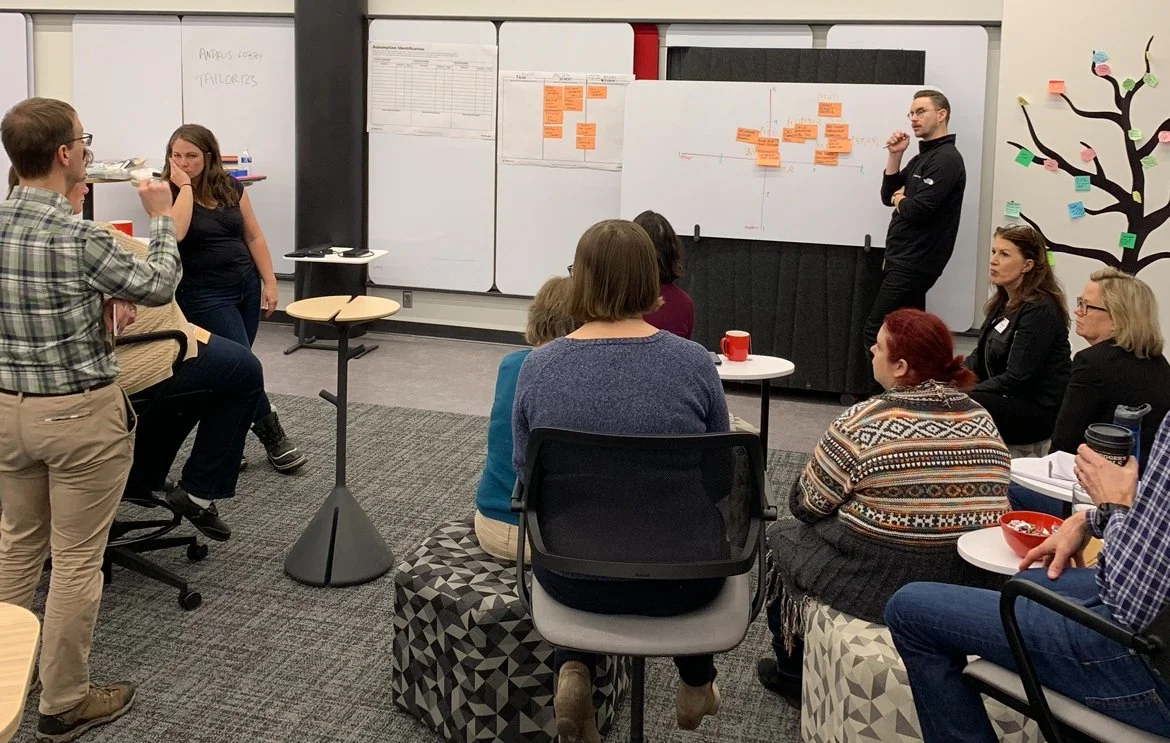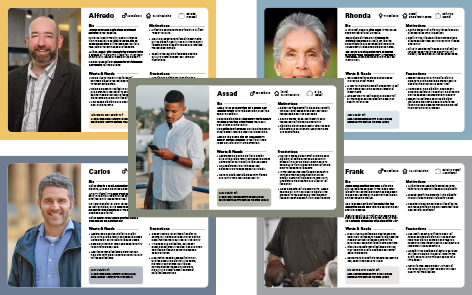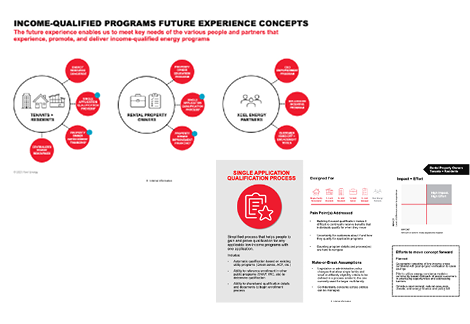
IMPROVING ACCESS FOR INCOME QUALIFIED CUSTOMERS
THE CHALLENGE
Lack of awareness about energy efficiency improvement programs offered by Xcel Energy and complicated qualification criteria and qualification processes keep many income-qualified customers from taking advantage of beneficial discounts and needed assistance.
APPROACH + ACTIVITIES
OBJECTIVES
Working with our Policy + Strategy Leads for Demand Side Management (Customer Usage Planning Team), we identified a project approach organized around the following objectives:
• Actively incorporate insights from annual income-qualified energy assistance program research into program revisions
• Create shared view of program customers, focused on highlighting the attributes that drive the most meaningful support
• Build collaborative relationship dynamics between Xcel Energy and community organizations and partners
• Contribute to end-of-year regulatory filing to ensure continued support of income-qualified customers
Our approach for this effort focused on gaining a clear understanding of the annual program evaluation(s) conducted by Xcel Energy’s third party partners, determining how their research could help us highlight key grounding and focus areas for ideation, and facilitating a collaborative working session with both Xcel Energy employees and community partners to ensure an aligned effort to improve energy efficiency assistance programs. This included:
Analysis of annual program evaluation research, conducted by third party research partner
Creation of five distinct customer personas, based on data and insights from research analysis
DELIVERABLES
OUTCOMES + NEXT STEPS
Developed Clear Vision for the Future
• Based on concepts created in multi-day session, we outlined a cohesive future experience that enables support of a variety of key people and partners who experience, promote, and deliver income-qualified energy assistance programs
Multi-day interactive working session with cross-functional Xcel Energy team and community, Minneapolis/St. Paul city office leaders.
Session focused on validating personas, identifying key focus areas, ideating solutions, and detailing key “must- haves” for solution concepts
Five Customer Personas
Personas needed to capture two important nuances.
The unique and different pain points and needs for residential customers who own a home as compared to those who rent. While those who own a home can qualify and enroll in energy efficiency assistance programs themselves, those who rent can only currently participate in these programs if their landlord or a property manager applies on behalf of the entire property.
The size of the property often determines which energy efficiency assistance programs are relevant and who the decision-maker is. Smaller properties with 1-4 units are typically managed by the property owner directly, who is looking to make smart investments in building updates that also don’t break the bank. For larger properties, Xcel Energy often communicates with property managers who are trying to keep both tenants and building ownership happy while maintaining the conditions and value of the property.
Eight Future Experience Concepts
The future experience was designed to address the needs of our two main persona groups, tenants or residents and property owners. While the project focus was easing the experience for these two user types, our working session revealed that it was also important to re-think how Xcel Energy collaborates best with community-based organizations and other groups that are part of delivering services to customers through energy efficiency assistance programs. To that end, three of the eight concepts were focused on improving the experience for Xcel Energy partners, to better empower them as resources for customers looking for trustworthy, resources, guidance, and support.
Connected Past, Present, and Future Efforts
• After our multi-day session we worked with subject matter experts and program owners to cross-reference each of our future experience concepts with current and planned work that would help establish the concept, as well as aspirational goals to guide future developments of each concept



